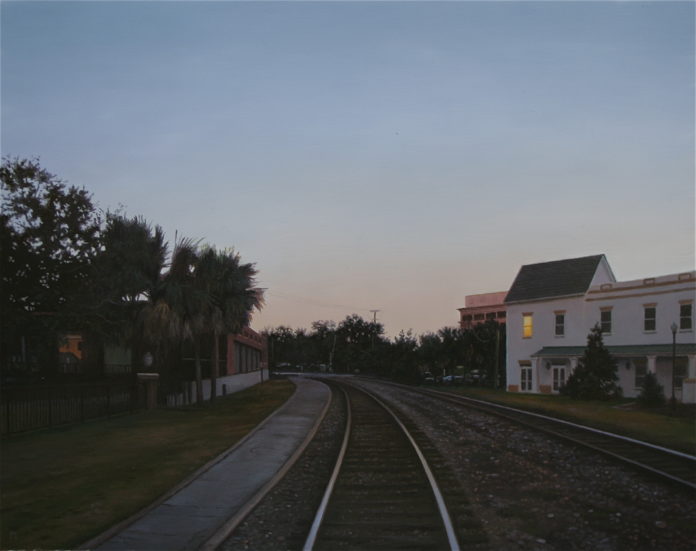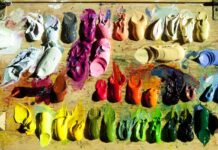Realism Landscapes > “I needed to paint my life and my search with the hope that this would reveal a deeper meaning to me.”
BY MATTHEW CORNELL
For the longest time I have struggled with what I am doing. Not in a material sense, although that has its own issues, but why I am painting and its real purpose. It’s not an unusual struggle or unique to me, but a struggle of identity and meaning as an artist. Sometimes it seems so ridiculous to put paint on a flat surface and convince people that this is some sort of reality and that they should buy it and hang on their walls, when in fact, it is an illusion of reality.
So I ask myself: What am I doing and why am I doing it? For a number of years, I did just pure landscapes—a celebration of our American landscape. But eventually it was not enough. I needed to evolve. I needed to paint a more personal experience and I wanted the canvas to say something about who I am and the world I inhabit. I needed to paint my life and my search with the hope that this would reveal a deeper meaning to me.
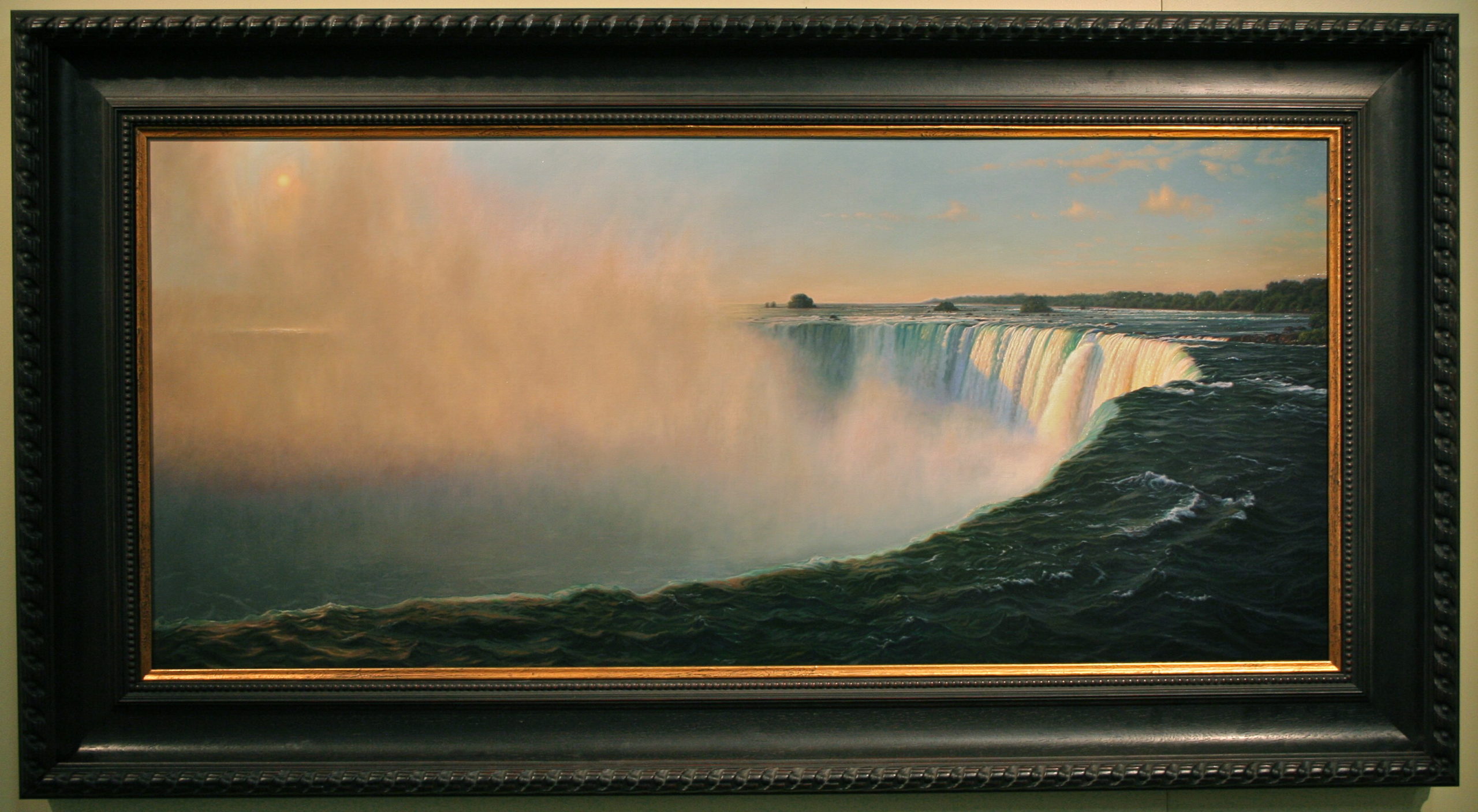
We traveled so much when I was a child. Some were vacations, but most were out of necessity to get from one place to the next. We would all pile into the family station wagon and hit the road. Towns such as Gallup, NM and Amarillo, TX became ingrained in my memory. The mileage signs along the road are as clear to me now as anything. I spent so much time staring out of that car. My father was in the Air Force and we moved around a lot, which has had a big impact on my restlessness. My older sister was in 12 different schools during her 12 years of grade school.
Every summer was spent going by car back to California, where my mother’s family was, or to Kentucky, where my father grew up and his family still lived. I knew this country backwards and forwards by the time I was 12. Every city and every little town became familiar. But the result of all of this, the result of all this travel and moving, I believe, was a sense that I belonged everywhere and nowhere at the same time. It was a rootless existence. Stuckey’s was more familiar than any childhood backyard. I have never had a sense that I belonged where I was. I have now spent the last 20 years of my life looking for home.
I pretty much do everything by car now. This mode of travel is obviously influenced by my childhood. I spend so much time getting off the main highway and exploring towns and neighborhoods that I don’t often use a map. The new discovery—and there always seems to be one—is the thing that really excites me when I am out on the road.
I have bothered many a real estate agent to show me a home for sale. All of this looking is nostalgia for a childhood that really never existed. I wonder what it would be like to grow up in a single place, to have all of your childhood memories in just one home and to call just one place your home, and to have, what I perceive, is the foundation that is provided by that experience. The sense that you know where you are from and thus, know where you are going.
This search became the change in my paintings. From benign and deliberately beautiful, idealized landscapes, where there is no trace of human presence, to paintings of homes and neighborhoods with activity.
I began by painting a small home in our neighborhood near my studio. I passed by it nearly every day and never saw anyone, but there was always subtle evidence of activity, toys in the yard, laundry on the line, every day. In the evening, a small light was on in the back room. I wondered who was working or sitting back there every evening and night. What was their story? That became the painting.
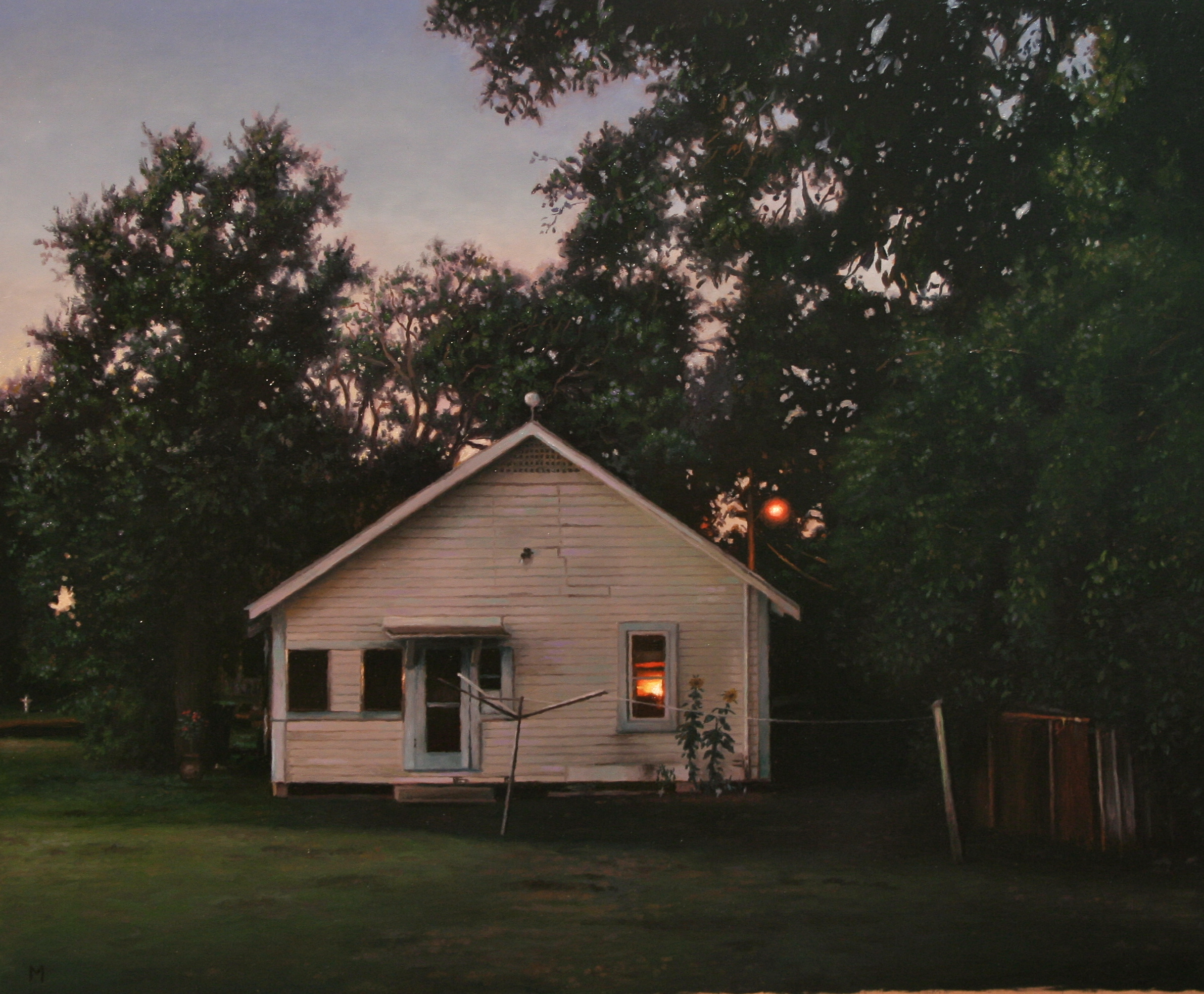
As I drive around the country, I often wonder about the lives that people lead inside these homes. How did they get there? How long have they been there? What is the history of the house? I know life can be complicated and difficult, but when I look into the warm glow of light emanating from a kitchen of a small country house, I see dignity and simplicity. But there is a longing, a longing that cannot be fulfilled. I sense that I have been away for so long and that the world has moved on without me and that all the memories created in each and every home are created without me. I so often feel it is time to come home, but I just don’t know where home is.
My father grew up on a farm outside a small town in Kentucky. So much of my father’s character, his work ethic, how he sees the world, was formed on that land. My painting “Middle America” was really an image, a story, about him. A portrait of a working man, who rises early, represented by the light in the window on the left. It is a kind of simple stubbornness, finding meaning and purpose and identity, in that work, formed by life in one home, in one small town in America. He has always known who he is, regardless of the many places life has taken him. Just a small-town boy who has worked hard all his life.
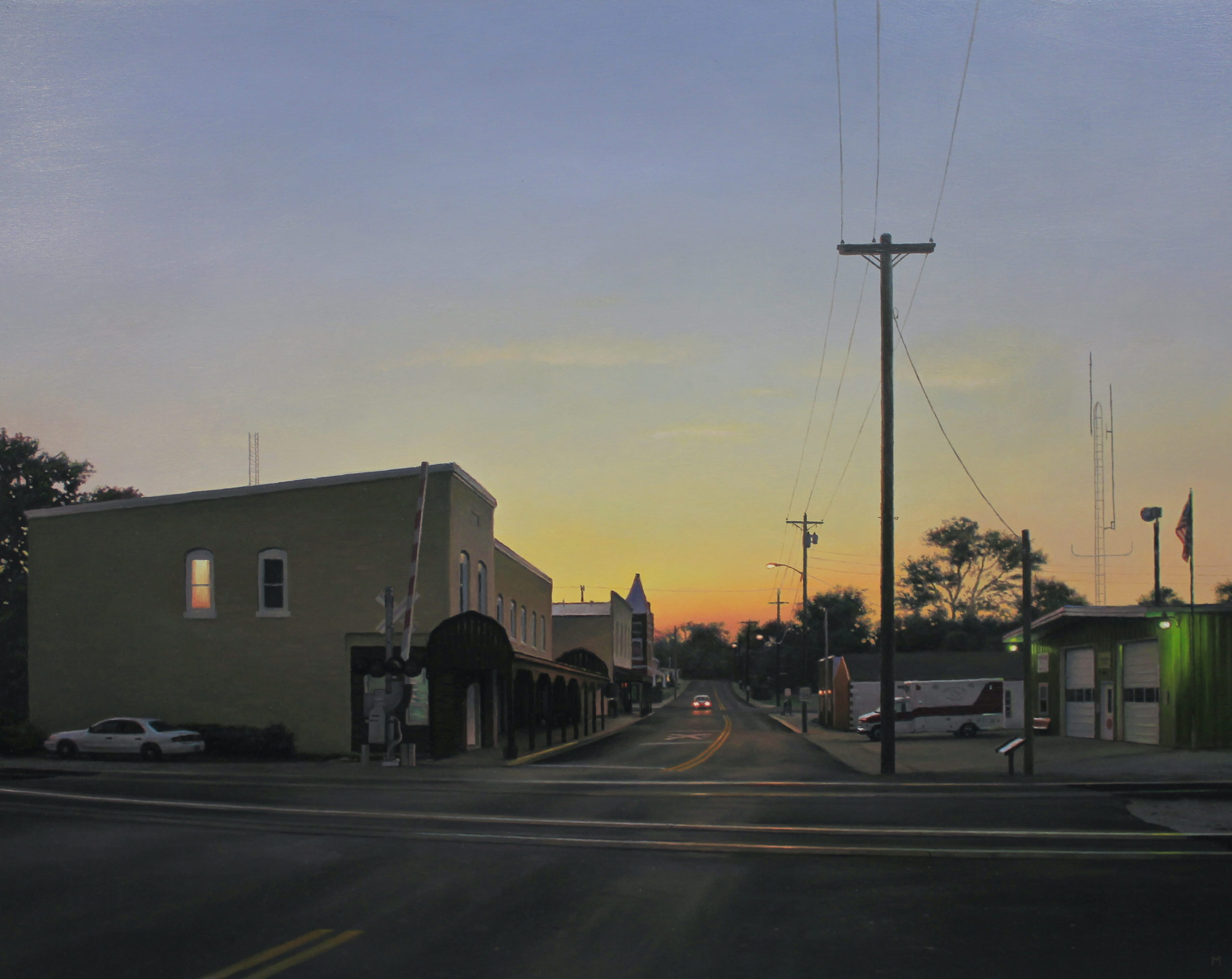
My wife grew up in Michigan and her childhood was spent in only one home. It has given her a solid foundation of who she is and where she is from. My father-in-law has lived in that same house in Michigan for 56 years. When they speak of home, it is clear what they are talking about. Sacred depicts this home and the house next door that has been occupied by the same woman for 50 years. It is about the bond created by longtime friends and how in America we can be very different and yet still create a neighborhood of harmony. It can be a precious thing, a sacred thing, to live your life in just one place for so long.
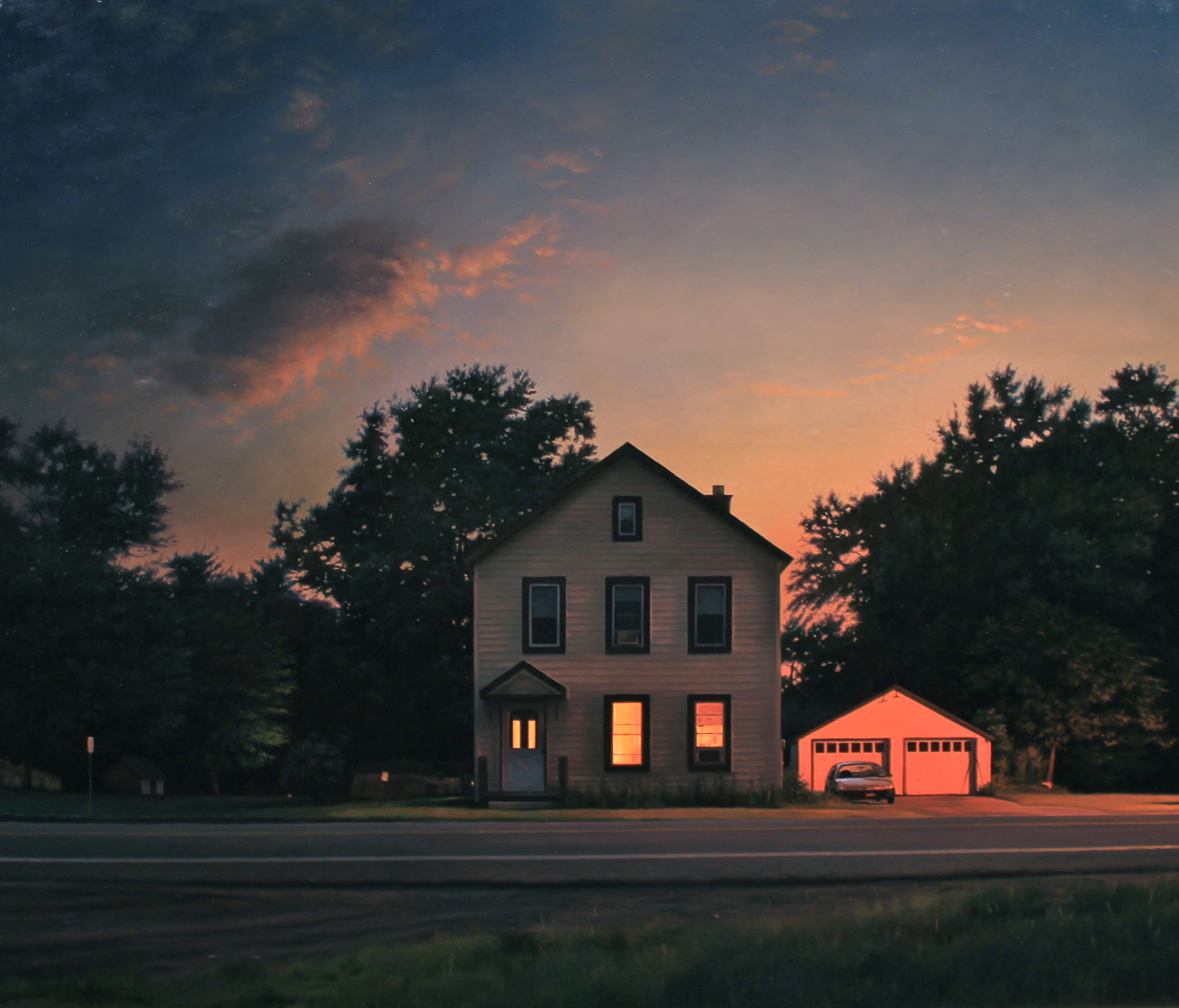
Almost all of the paintings are at night or dusk. I love that time of day. It is mysterious and secretive. It can change an ordinary object that is shrouded in darkness into something beautiful and undefinable, as heavy snow will do in winter. Sometimes when driving, you get a brief glimpse, a momentary glance at a place and it allows your imagination to fill in the blanks of an unfinished story and create a whole new narrative that is only known to you. The radiance of a window imbues these paintings with an undeniable and irresistible sense of life. Who are these people and what are their stories?
Connect with the artist: matthewcornell.com
Discover more realism landscapes: realismtoday.com
Visit EricRhoads.com (Publisher of Realism Today) to learn about opportunities for artists and art collectors, including: Art Retreats – International Art Trips – Art Conventions – Art Workshops (in person and online, including Realism Live) – And More!


